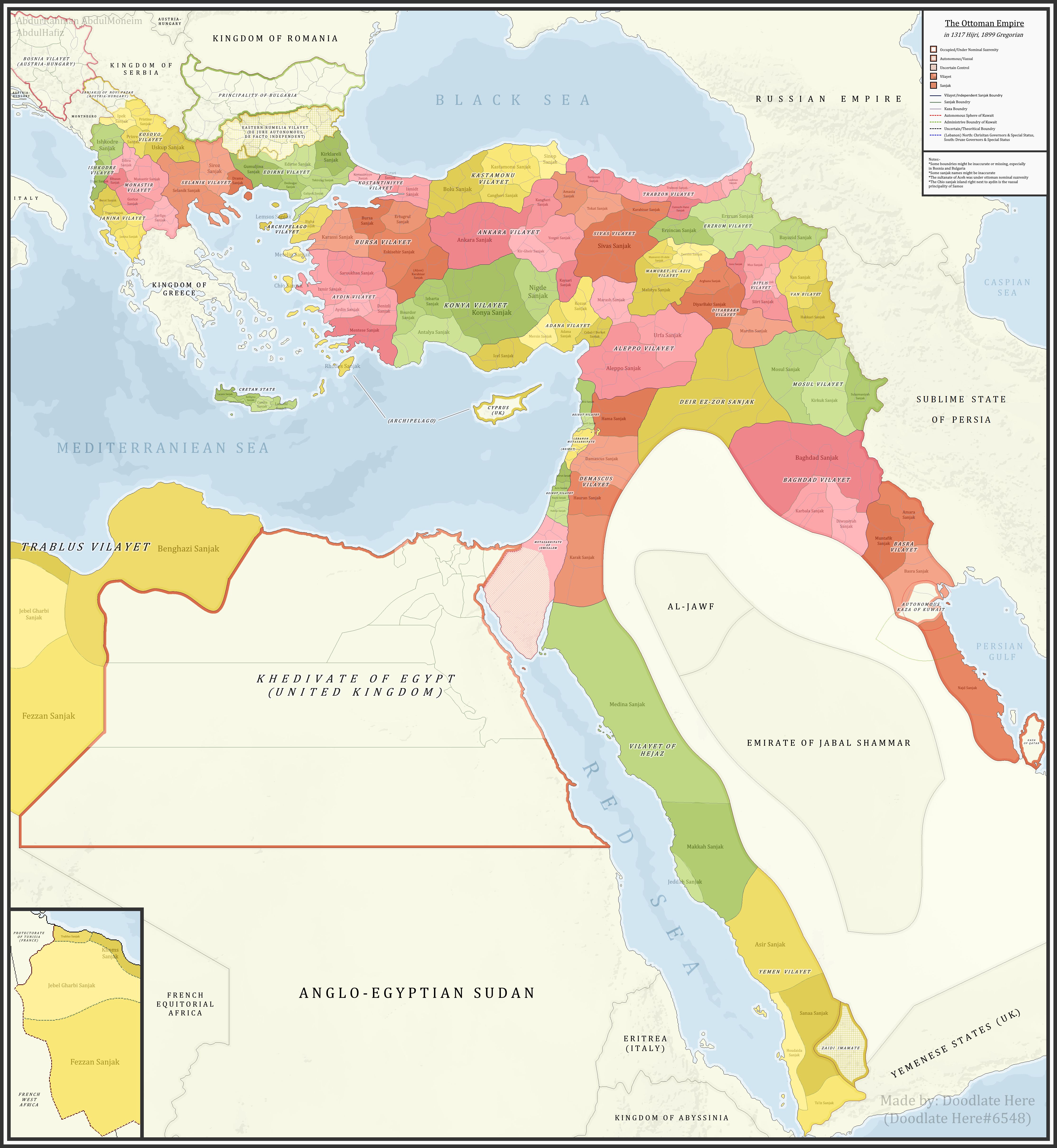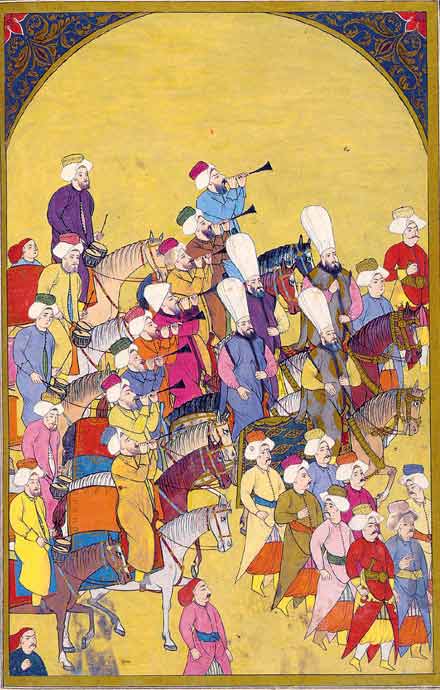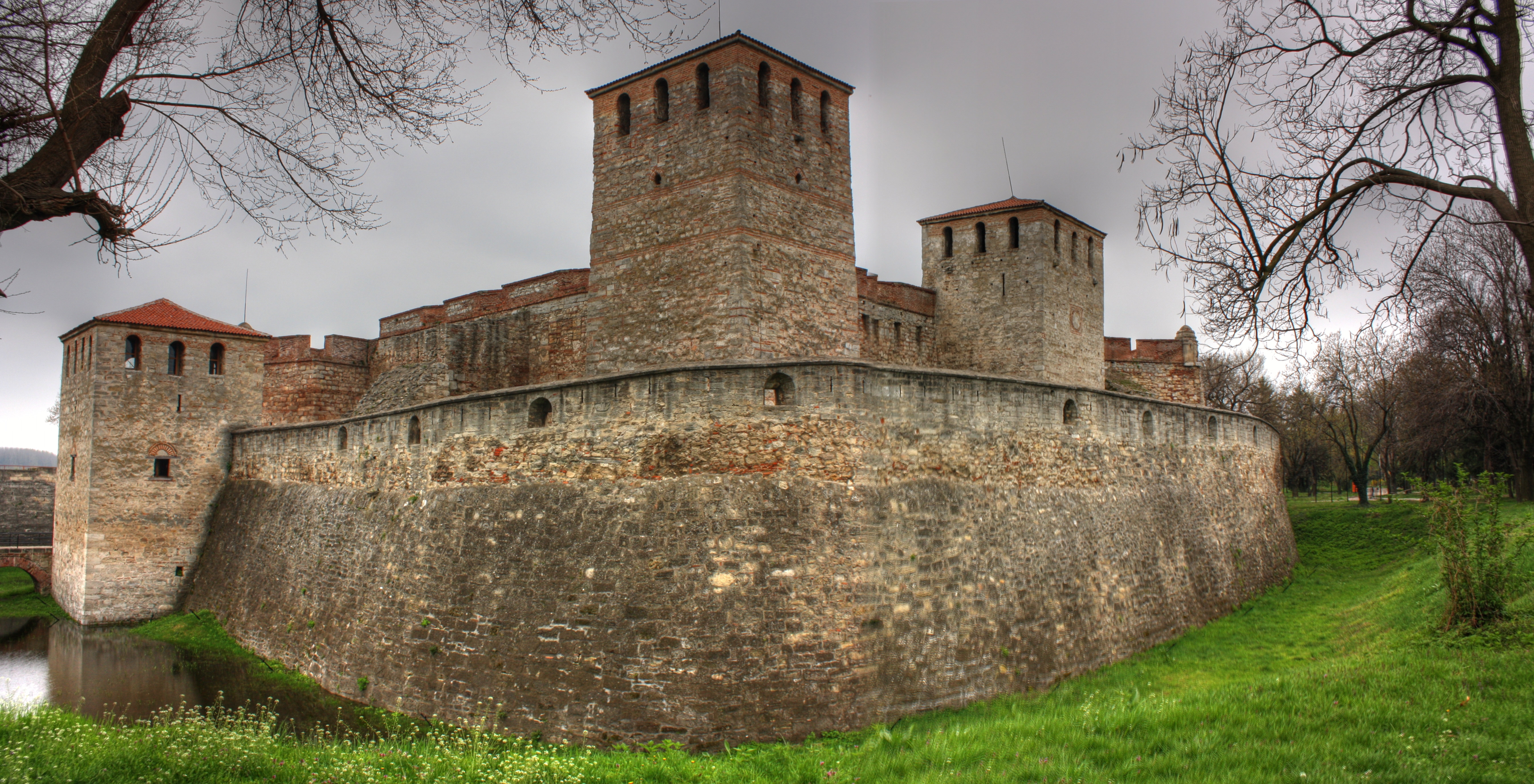|
Sanjak Of Nicopolis
The Sanjak of Nicopolis ( bg, Никополски санджак, links=no ''Nikopolski sandzhak'', tr, Niğbolu Sancağı, links=no) was a sanjak in the Ottoman Empire, with Nikopol in modern Bulgaria as its administrative centre. It was established out of the territories of the Tsardom of Vidin, after the Battle of Nicopolis in 1396. Administration The earliest defter of the Sanjak of Nicopolis is composed in the mid-15th century. One group of scholars dated this defter to 1430 while another group of scholars dated it to 1479/1480. This was the first Ottoman defter which mentioned the Romani people, who lived in 431 households, or 3.5 percent of households in this sanjak. Administrative division In the collected notes of Evliya Çelebi (mid-17th century) the Sanjak of Nicopolis with 20 ziamets and 244 timars and income of 40,000 aspres was mentioned as one of 24 Ottoman sanjaks in Rumelia. In the mid-19th century it had 15 kadiluks. Sanjak-beys Bulgarian historia ... [...More Info...] [...Related Items...] OR: [Wikipedia] [Google] [Baidu] |
Sanjak
Sanjaks (liwāʾ) (plural form: alwiyāʾ) * Armenian: նահանգ (''nahang''; meaning "province") * Bulgarian: окръг (''okrǔg''; meaning "county", "province", or "region") * el, Διοίκησις (''dioikēsis'', meaning "province") or επαρχία (''eparchia'', meaning " eparchy") * lad, sancak , group=note (; ota, ; Modern Turkish: ''Sancak'', ) were administrative divisions of the Ottoman Empire. ''Sanjak'', and the variant spellings ''sandjak'', ''sanjaq'' and ''sinjaq'', are English or French transliterations of the Turkish word ''sancak'', meaning "district", " banner" or "flag". Sanjaks were also called by the Arabic word for ''banner'' or ''flag'': '' liwa (Liwā or Liwā’)''. Ottoman provinces ( eyalets, later vilayets) were divided into sanjaks (also called ''livas'') governed by sanjakbeys (also called '' Mutesarriff'') and were further subdivided into '' timars'' (fiefs held by '' timariots''), kadiluks (the area of responsibility of a jud ... [...More Info...] [...Related Items...] OR: [Wikipedia] [Google] [Baidu] |
Sanjak-bey
''Sanjak-bey'', ''sanjaq-bey'' or ''-beg'' ( ota, سنجاق بك) () was the title given in the Ottoman Empire to a bey (a high-ranking officer, but usually not a pasha) appointed to the military and administrative command of a district (''sanjak'', in Arabic '' liwa’''), hence the equivalent Arabic title of ''amir liwa'' ( ) He was answerable to a superior ''wāli'' or another provincial governor. In a few cases the ''sanjak-bey'' was himself directly answerable to Istanbul. Like other early Ottoman administrative offices, the ''sanjak-bey'' had a military origin: the term ''sanjak'' (and ''liva'') means "flag" or "standard" and denoted the insigne around which, in times of war, the cavalrymen holding fiefs (''timars'' or ''ziamets'') in the specific district gathered. The ''sanjakbey'' was in turn subordinate to a ''beylerbey'' ("bey of beys") who governed an ''eyalet'' and commanded his subordinate ''sanjak-beys'' in war. In this way, the structure of command on the battlefie ... [...More Info...] [...Related Items...] OR: [Wikipedia] [Google] [Baidu] |
Ottoman Period In The History Of Bulgaria
The history of Ottoman Bulgaria spans nearly 500 years, from the conquest by the Ottoman Empire of the smaller kingdoms emerging from the disintegrating Second Bulgarian Empire in the late 14th century, to the Liberation of Bulgaria in 1878. As a result of the Russo-Turkish War (1877–1878), the Principality of Bulgaria, a self-governing Ottoman vassal state that was functionally independent, was created. In 1885 the Ottoman autonomous province of Eastern Rumelia came under the control of and was unified with the Principality of Bulgaria. Bulgaria declared independence in 1908. Administrative organization The Ottomans reorganised the Bulgarian territories, dividing them into several vilayets, each ruled by a Sanjakbey or Subasi accountable to the Beylerbey. Significant parts of the conquered land were parcelled out to the Sultan's followers, who held it as benefices or fiefs (small ''timars'', medium ''ziyamet'' and large ''hases'') directly from him, or from the Beyle ... [...More Info...] [...Related Items...] OR: [Wikipedia] [Google] [Baidu] |
Sanjaks Of The Ottoman Empire In Europe
Sanjaks (liwāʾ) (plural form: alwiyāʾ) * Armenian: նահանգ (''nahang''; meaning "province") * Bulgarian: окръг (''okrǔg''; meaning "county", "province", or "region") * el, Διοίκησις (''dioikēsis'', meaning "province") or επαρχία (''eparchia'', meaning "eparchy") * lad, sancak , group=note (; ota, ; Modern Turkish: ''Sancak'', ) were administrative divisions of the Ottoman Empire. ''Sanjak'', and the variant spellings ''sandjak'', ''sanjaq'' and ''sinjaq'', are English or French transliterations of the Turkish word ''sancak'', meaning "district", "banner" or "flag". Sanjaks were also called by the Arabic word for ''banner'' or ''flag'': '' liwa (Liwā or Liwā’)''. Ottoman provinces ( eyalets, later vilayets) were divided into sanjaks (also called ''livas'') governed by sanjakbeys (also called '' Mutesarriff'') and were further subdivided into ''timars'' (fiefs held by '' timariots''), kadiluks (the area of responsibility of a judge, ... [...More Info...] [...Related Items...] OR: [Wikipedia] [Google] [Baidu] |
Sanjak Of Mohač
Sanjaks (liwāʾ) (plural form: alwiyāʾ) * Armenian: նահանգ (''nahang''; meaning "province") * Bulgarian: окръг (''okrǔg''; meaning "county", "province", or "region") * el, Διοίκησις (''dioikēsis'', meaning "province") or επαρχία (''eparchia'', meaning "eparchy") * lad, sancak , group=note (; ota, ; Modern Turkish: ''Sancak'', ) were administrative divisions of the Ottoman Empire. ''Sanjak'', and the variant spellings ''sandjak'', ''sanjaq'' and ''sinjaq'', are English or French transliterations of the Turkish word ''sancak'', meaning "district", "banner" or "flag". Sanjaks were also called by the Arabic word for ''banner'' or ''flag'': '' liwa (Liwā or Liwā’)''. Ottoman provinces ( eyalets, later vilayets) were divided into sanjaks (also called ''livas'') governed by sanjakbeys (also called ''Mutesarriff'') and were further subdivided into ''timars'' (fiefs held by ''timariots''), kadiluks (the area of responsibility of a judge, or K ... [...More Info...] [...Related Items...] OR: [Wikipedia] [Google] [Baidu] |
Sanjak Of Zvornik
The Sanjak of Zvornik ( tr, İzvornik Sancağı, sh, Zvornički sandžak) was one of the sanjaks in the Ottoman Empire with Zvornik (in modern-day Bosnia and Herzegovina) as its administrative centre. It was divided into 4 different districts: Žepče, Maglaj, Tuzla and Kladanj. The sanjak was created between 1478 and 1483. Following its dissolution in 1878 after the Austro-Hungarian Empire defeated the Ottomans, Zvornik became part of the Zvornik Kotar. During the Ottoman period, Zvornik was the capital of the Sanjak of Zvornik (an administrative region) within the Bosnia Eyalet. This was primarily the case because of the city's crucial role in the economy and the strategic importance of the city's location. The Sanjak of Zvornik was one of six Ottoman sanjaks with most developed shipbuilding (besides sanjaks of Vidin, Nicopolis, Požega, Smederevo and Mohač). In the year 1806 the city of Zvornik was home to the famous Bosniak The Bosniaks ( bs, Bošnjaci, Cyrillic script ... [...More Info...] [...Related Items...] OR: [Wikipedia] [Google] [Baidu] |
Sanjak Of Pojega
The Sanjak of Pojega ( tr, Pojega Sancağı; hr, Požeški sandžak) was an administrative territorial entity of the Ottoman Empire formed around 1538. It existed until the Treaty of Karlowitz (1699), when the region was transferred to the Habsburg monarchy. It was located in present-day eastern Croatia, in the Slavonia region. The capital of the sanjak was Pojega (Croatian: Požega). History The first defter in the sanjak was held in 1540. The Sanjak of Pojega included territory between Sava and Drava rivers and at first was part of the Rumelia Eyalet. In 1541, it was included into Budin Eyalet, in 1580 into Bosnia Eyalet, in 1596 into Zigetvar Eyalet, and in 1600 into Kanije Eyalet. The Sanjak of Požega was one of six Ottoman sanjaks with most developed shipbuilding (besides sanjaks of Smederevo, Nicopolis, Vidin, Zvornik and Mohács). Toward Croatian and Slavonian border the Ottomans populated numerous Christian Vlachs, who either already lived there or who were brough ... [...More Info...] [...Related Items...] OR: [Wikipedia] [Google] [Baidu] |
Sanjak Of Smederevo
The Sanjak of Smederevo ( tr, Semendire Sancağı; sr, / ), also known in historiography as the Pashalik of Belgrade ( tr, Belgrad Paşalığı; sr, / ), was an Ottoman administrative unit (sanjak), that existed between the 15th and the outset of the 19th centuries. It was located in the territory of present-day Central Serbia, Serbia. Administration Eyalet belonging The sanjak belonged to Rumelia Eyalet between 1459 and 1541, and again between 1716 and 1717 and again 1739 and 1817 (nominally to 1830), to Budin Eyalet between 1541 and 1686, and to Temeșvar Eyalet between 1686 and 1688 and again between 1690 and 1716. Borders During the governorship of Hadji Mustafa Pasha (1793–1801), the administration was expanded eastwards to include the Kladovo area, until then part of the Sanjak of Vidin. History 15th century The Sanjak of Smederevo was formed after the fall of the Serbian Despotate in 1459, and its administrative seat was Smederevo. Ottoman sources note a m ... [...More Info...] [...Related Items...] OR: [Wikipedia] [Google] [Baidu] |
Shipbuilding
Shipbuilding is the construction of ships and other Watercraft, floating vessels. It normally takes place in a specialized facility known as a shipyard. Shipbuilders, also called shipwrights, follow a specialized occupation that traces its roots to before recorded history. Shipbuilding and ship repairs, both commercial and military, are referred to as "Naval architecture, naval engineering". The construction of boats is a similar activity called boat building. The dismantling of ships is called ship breaking. History Pre-history The earliest known depictions (including paintings and models) of shallow-water sailing boats is from the 6th to 5th millennium BC of the Ubaid period of Mesopotamia. They were made from bundled Reed (plant), reeds coated in bitumen and had bipod masts. They sailed in shallow coastal waters of the Persian Gulf. 4th millennium BC Ancient Egypt Evidence from Ancient Egypt shows that the early Egyptians knew how to assemble planks of wood into a hull ( ... [...More Info...] [...Related Items...] OR: [Wikipedia] [Google] [Baidu] |
Sanjak Of Vidin
The Sanjak of Vidin or the Vidin Sanjak ( bg, Видински санджак, sr, Видински санџак, tr, Vidin Sancağı) was a sanjak in the Ottoman Empire, with Vidin as its administrative centre. It was established after the Battle of Nicopolis in 1396 out of the territories of the Tsardom of Vidin and in the mid-15th century annexed some territories that belonged to the Serbian Despotate before the Ottomans captured it. Background After the major breakthrough into the Balkans at the end of the 14th century, the Ottomans were well aware of the strategic importance of Danube and decided to capture all important fortresses on its banks. The Tsardom of Vidin, which was under control of Ivan Sratsimir, became an Ottoman vassal state in 1393, and a strong Ottoman garrison was stationed in Vidin. Before the Battle of Nicopolis in 1396, Sratsimir surrendered the Ottoman garrison to the crusaders who were soon defeated, while Sratsimir was captured by the Ottoma ... [...More Info...] [...Related Items...] OR: [Wikipedia] [Google] [Baidu] |
Murad II
Murad II ( ota, مراد ثانى, Murād-ı sānī, tr, II. Murad, 16 June 1404 – 3 February 1451) was the sultan of the Ottoman Empire from 1421 to 1444 and again from 1446 to 1451. Murad II's reign was a period of important economic development. Trade increased and Ottoman cities expanded considerably. In 1432, the traveller Bertrandon de la Broquière noted that Ottoman annual revenue had risen to 2,500,000 ducats, and that if Murad II had used all available resources he could easily have invaded Europe. Early life Murad was born in June 1404 (or 1403) to Sultan Mehmed I. The identity of his mother is disputed. According to 15th century historian Şükrullah, Murad's mother was a concubine. Hüseyin Hüsâmeddin Yasar, an early 20th century historian, wrote in his work ''Amasya Tarihi'', that his mother was Şehzade Hatun, daughter of Divitdar Ahmed Pasha. According to historians İsmail Hami Danişmend, and Heath W. Lowry, his mother was Emine Hatun, daughter of ... [...More Info...] [...Related Items...] OR: [Wikipedia] [Google] [Baidu] |
Mirliva
''Mirliva'' or ''Mîr-i livâ'' was a military rank of the Ottoman Army and Navy. It corresponds to a brigadier general ( modern Turkish: ''Tuğgeneral'') in the modern Turkish Army. ''Mirliva'' is a compound word composed of '' Mir'' (commander) and ''Liva'' (or ''Liwa'', "brigade" in Arabic). , Turkish Language Association The rank was junior to the '' Ferik'' () and superior to the rank '' [...More Info...] [...Related Items...] OR: [Wikipedia] [Google] [Baidu] |


.png)

